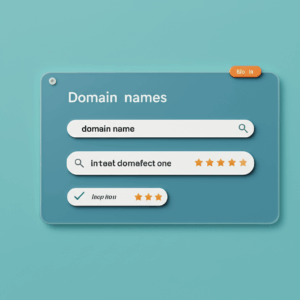- Why are Domain Names So Important?
- Domain Names: Key Considerations for Selection
- Navigating Domain Name Registration: A Step-by-Step Guide
- Domain Names: Best Practices for Long-Term Success
Domain Names: Choosing the Perfect One (Effortless Guide)
Domain names are the digital addresses of your website, the gateway through which users find you online. A well-chosen domain name can significantly impact your online presence, boosting brand recognition, improving search engine rankings, and ultimately driving traffic to your website. This effortless guide will walk you through the essential steps to selecting the ideal domain name for your needs.
Why are Domain Names So Important?

Your domain name is more than just a web address; it’s a crucial element of your online identity. It’s often the first impression you make on potential visitors, and a confusing or unprofessional domain name can drive them away before they even see your content. A strong domain name builds credibility and trust, making it easier for users to remember and share your website. It also plays a vital role in search engine optimization (SEO), influencing how search engines perceive and rank your site.
Domain Names: Key Considerations for Selection
Choosing the perfect domain name requires careful planning and consideration. Here are some crucial factors to keep in mind:
Relevance: Your domain name should be relevant to your website’s content and target audience. A clear connection between your domain and your business helps users understand what you offer and improves your search engine ranking for relevant keywords.
Brandability: A memorable and unique domain name can contribute significantly to building a strong brand identity. Avoid overly generic names and opt for something distinctive that sets you apart from the competition. Consider using a name that is catchy, easy to pronounce, and reflects your brand’s personality.
Keywords: Incorporating relevant keywords into your domain name can enhance your SEO efforts. While exact-match domains are no longer the ranking powerhouse they once were, including related terms can still give you a slight edge in search results. However, prioritize brandability over keyword stuffing, as an unnatural or overly optimized domain name can appear spammy.
Length and Simplicity: Shorter domain names are generally easier to remember and type, reducing the risk of user errors. Aim for a concise and straightforward domain name that avoids hyphens or numbers, as these can make it more difficult for users to recall or share your website address.
Extension: The domain name extension, also known as the top-level domain (TLD), is the suffix that follows the domain name (e.g., .com, .org, .net). While .com remains the most popular and widely recognized TLD, other extensions can be suitable depending on your target audience and website purpose. For example, .org is commonly used by non-profit organizations, while .net is often associated with technology-related businesses. Consider country-specific TLDs (e.g., .uk, .ca) if you primarily target a specific geographic location.
Navigating Domain Name Registration: A Step-by-Step Guide
Once you’ve brainstormed some potential domain names, it’s time to check their availability and register your chosen option. Follow these steps to secure your perfect domain:
1. Use a Domain Name Registrar: Numerous domain registrars, like GoDaddy, Namecheap, and Google Domains, offer domain registration services. Choose a reputable registrar that offers competitive pricing and reliable customer support.
2. Check Availability: Enter your desired domain name into the registrar’s search tool to check its availability. If your preferred domain is taken, the registrar will typically suggest alternative options, such as variations with different extensions or similar names.
3. Choose Your Extension: Select the appropriate TLD for your website. While .com is generally preferred, consider other options based on your specific needs.
4. Complete the Registration Process: Provide the required information, including your contact details and payment information, to complete the registration process.
5. Configure Your DNS Settings: After registering your domain, you’ll need to configure your DNS settings to connect it to your website hosting server. Your registrar will provide instructions on how to update your DNS records.
Domain Names: Best Practices for Long-Term Success
Securing the right domain name is just the first step. To maximize its impact and ensure long-term success, consider these best practices:
Protect Your Brand: Register variations of your domain name with different extensions and misspellings to prevent competitors from registering them and potentially diverting traffic away from your site.
Renew Your Registration: Domain registrations typically expire after a specific period (usually one or more years). Set reminders to renew your registration promptly to avoid losing your domain name.
Monitor Your Domain: Regularly monitor your domain for any unauthorized activity or changes. This helps protect your brand and prevents potential security issues.
By following this effortless guide, you can navigate the process of choosing and registering the perfect domain name, laying a solid foundation for your online presence and future success. Remember that your domain name is a valuable asset, so invest the time and effort to select one that effectively represents your brand and helps you achieve your online goals.















Leave a Reply